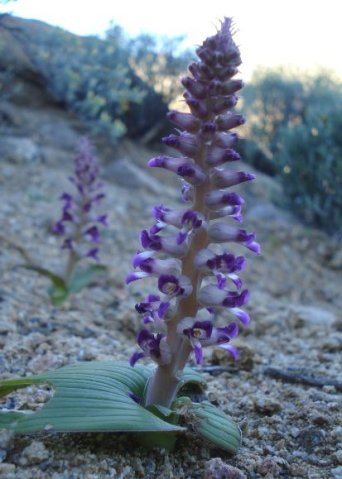Lachenalia

Author: Ivan Lätti
Photographer: Judd Kirkel Welwitch
Lachenalia is a genus of deciduous, bulbous perennials in the Hyacinthaceae family. The bulbs are variable in size and covered in dry, membranous tunics. Roots and above-ground parts are grown annually, usually after a dormancy period.
There was a formal name change decision taken in 2016 by the APG (Angiosperm Phylogeny Group) IV, moving Hyacinthaceae entirely into Asparagaceae as the subfamily Scilloideae. This will probably cascade through the botanical literature in due course, meaning that Hyacinthaceae is officially no longer recognized as a separate family. Later South African books do not necessarily show this change yet, for reasons including that it is not legally binding and the people in the plants community are allowed to take their time in absorbing changes, bigger ones more slowly. And, of course, some recent decisions may be expected to be reversed or modified still, as all the evidence supporting them may not yet have fully percolated through the system.
Optional earlier classifications may thus be continued, preventing sudden changes from causing regional confusion among users. Allowing taxonomic conservatism to adapt, should be regarded as temporary, for in the end all recognized plant families should be monophyletic, meaning that they confirm descent from a most recent common ancestor and include all descendants. Formally given scientific plant names are continually brought up to date, in accordance with this principle. This website, mainly serving amateurs, usually follows the SANBI Red List Site in its timing of reflected changes.
Some Lachenalia species form a neck above the bulb around the stem and some are bulbilliferous, meaning bearing bulbils, which are small bulb-like structures, commonly growing from leaf axils and fall to form new plants, a form of vegetative reproduction.
One to many leaves are grown, mostly two, before, during or after flowering. The leaves are erect, spreading or flat on the ground. Leaf-shape varies from linear and ovate to oblong, round and quill-shaped, often funnel-shaped or tubular at the base. The margins are entire, sometimes wavy. The leaves are smooth, hairy or covered in pustules, sometimes blotched or transversely striped. The leaf-bases are often underground in membranous, transparent sheaths.
The inflorescence is an erect spike or raceme of few to many flowers, the uppermost ones sometimes failing to develop, i.e. sterile or vestigial. The peduncle may be cylindrical, club-shaped and sometimes spotted. There are bracts below the flowers, variable in size and shape.
The flower colour range includes white, yellow, orange, red, blue, purple or green. The perianths are irregular, bell-shaped or tubular with segments fused at the base and borne pendulous, angled or horizontal. Inner tepals are usually longer, the outer ones often with dark coloured swellings at their tips. Pedicels vary in length or are absent.
The six stamens arise in a whorl at two levels from the base of the perianth and are exserted or not. The superior ovary is ovoid and has three locules bearing variable numbers of ovules. The cylindrical style varies in length, the tiny stigma compactly head-shaped.
The fruit is an ovoid, three-angled or three-winged capsule with membranous walls, dehiscing per locule. The numerous, globose, black seeds vary in size and texture. There is a false aril attached to each seed, and arillode varying in shape and size.
There are about 136 Lachenalia species, all occurring in southern Africa, 70 of which in the fynbos. Commonly known in Afrikaans as viooltjies (little violins), some species are called Cape cowslips.
There are about 100 recorded cultivars of plants of the genus. Lachenalias, as many other bulbous plants, are grown sexually from seed, as well as vegetatively from a variety of methods, including bulbils, offsets, division, leaf cuttings, scaling and micro-propagation. This micro-production is a technical process, tissue culture, done in a laboratory by which thousands of plants may be produced from a single leaf.
The plant in picture is Lachenalia carnosa (Pooley, et al, 2025; Euston-Brown and Kruger, 2023; Leistner, (Ed.), 2000; Manning, 2007; Wikipedia; http://www.lachenalia.net; www.pacificbulbsociety.org; http://redlist.sanbi.org).

